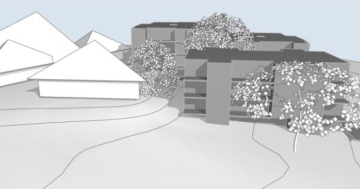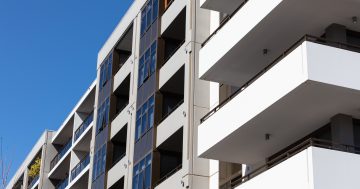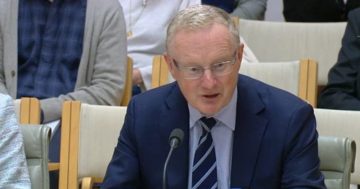
People on minimum wage or Centrelink incomes continue to struggle in ACTs property market. File photo.
If you’ve been feeling as though paying the rent is harder than it used to be in Canberra, you’d be right. Especially if you’re on an Age Pension or other Centrelink payments, or a minimum wage earner. And even more so if you have children.
Canberra is often described as a relatively affluent city, with higher income levels than the national average. This high average makes it an attractive city for real estate investment. But those averages hide a growing gap in housing affordability for low-income households, as data in the Anglicare Rental Affordability Snapshot from 2014 to 2019 shows.
The Anglicare Rental Affordability Snapshot looks at properties advertised for rent around the same time each year, and analyses the number that are affordable for households on different Centrelink income support payments or minimum wages. Affordable means rent is no more than 30 per cent of the household income. But housing also needs to be appropriate. Anglicare also look at the number of bedrooms, because a household with children will need more than one bedroom to avoid overcrowding.
This year, the Anglicare snapshot shows that there is only one property in the ACT or Queanbeyan that was both affordable and appropriate for a couple on Age Pension, and nothing for a single person on Age Pension.
Things are not much better for households reliant on minimum wage employment. For a couple with two children (aged under 5 and under 10 years old) where both parents have full-time minimum wage employment, plus Family Tax Benefits, there were only seven affordable and appropriate properties available for rent. And if one of those parents loses their employment income, or the household becomes a single parent with two children, there was nothing appropriate and affordable for rent in the ACT or Queanbeyan.
For single people earning a minimum wage, there were only a few affordable properties advertised for rent in the ACT or Queanbeyan. For single people reliant on Centrelink payments, there was nothing.
What this means is that Canberra is now a city that is unaffordable for renters who are young students, anyone who is unable to earn an income due to unemployment or health issues, people who have retired onto an Age Pension, or parents who don’t earn more than minimum wage.
“A pensioner who contributed their working life to bettering this city, is left with just one hundred bucks a week after paying the landlord what they command for a one beddy and a no pet clause,” said Travis Gilbert, CEO of ACT Shelter.
For women, who are 80 per cent of the single parents in Canberra and often have a lower income than men, this increases the pressure on making relationships work. A 2014 report from Domestic Violence Crisis Service, Staying Home After Domestic Violence, showed most ACT women stayed home after an incident of violence. They also found that 54.6 per cent of women with home ownership and 62.5 per cent of women renting lose their homes within a year of separation. Women also talked about being unable to afford housing without their partner’s income in a 2016 report, Hear Me Out: Women’s experiences of seeking help for domestic violence in the ACT, published by Women’s Centre for Health Matters.
“We’ve known about this problem for a decade now, and housing stress is broadening, hitting working people as well as people on income support,” says community advocate Rebecca Vassarotti. As former CEO of YWCA Canberra, former President at the ACT Council of Social Service, and current Board member at Community Housing Canberra, Ms Vassarotti has spent more than fifteen years looking at issues relating to housing affordability.
“We need to move beyond broad commitments to real action,” Ms Vassarotti said.
How did we get here?
The population in the ACT has grown by more than 8.8 per cent over the past five years – from 388,190 people in March 2014 to 422,478 in September 2018, according to the Australian Bureau of Statistics. But the number of houses and apartments sold in the ACT in the December 2018 quarter has fallen back to March 2014 levels, which means there’s more competition for housing. This contributes to the rising median property price in the ACT.
Anglicare Australia’s report, The Cost of Privilege, showed that $42 billion from a total of $89 billion in negative gearing and capital gains tax concessions are going to the wealthiest 20 per cent as subsidies and concessions each year.
At the same time, public housing stocks in the ACT continue to struggle to meet demand. The average wait time for standard applicants for public housing in the ACT in 2018 was 983 days, with a wait of 274 days for priority housing applicants.
Mr Gilbert said that between 2006 and 2016, the proportion of households renting privately increased, while the proportion of social tenants fell sharply.
“Social housing is now just 6 per cent. This is less than half the proportion the ACT inherited as legacy properties at the time of self-government.”
“We need more investment in social housing stock, we need to grow the affordable rental market – the recent decision to reduce land tax for properties rented at below market rent is a start but more is needed,” Ms Vassarotti said.
Until then, it looks like renters earning minimum wage and those reliant on welfare support payments will struggle to keep a roof over their heads in a city that is often considered to be well off.





















